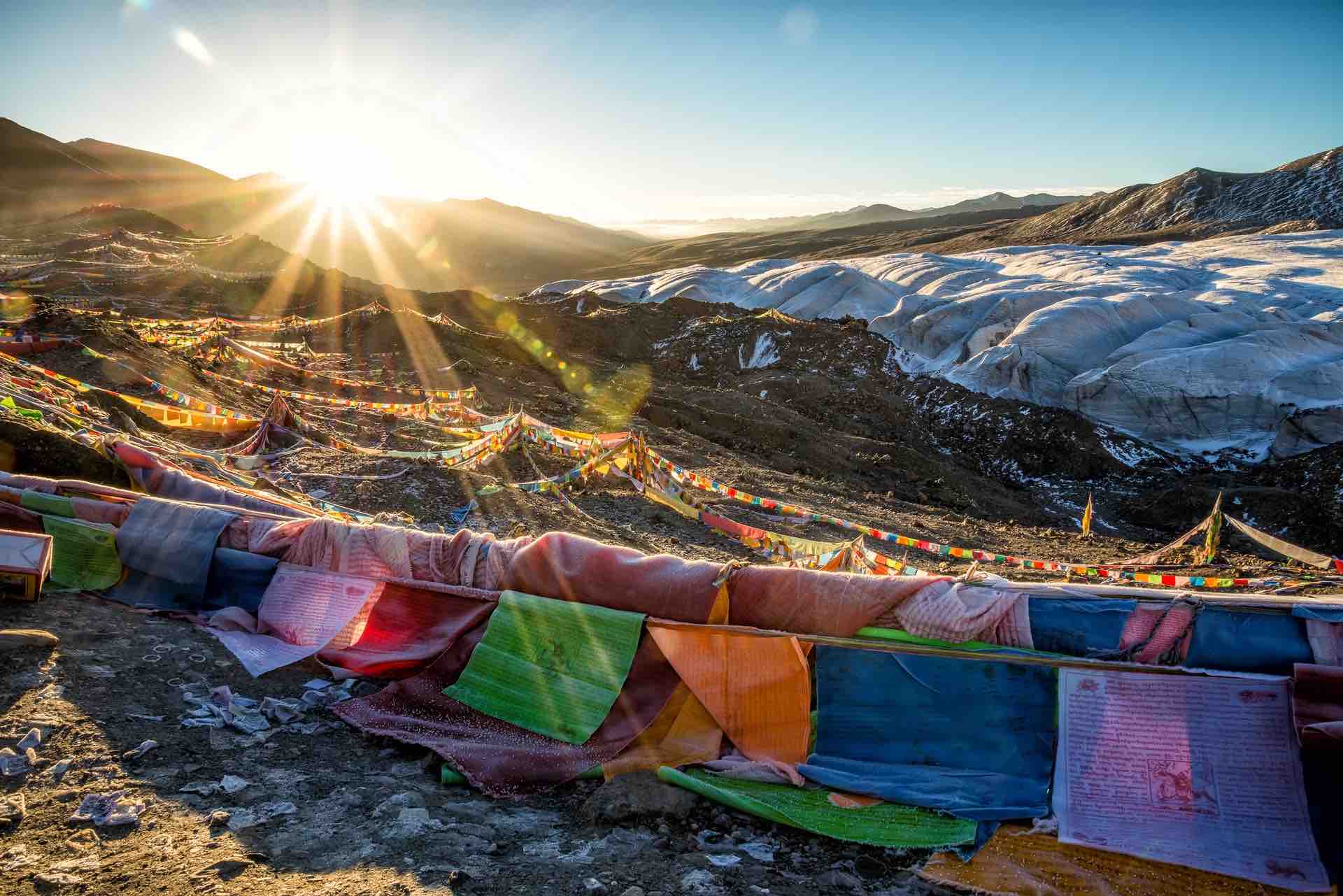Also known as the Vajrayana tradition of Buddhism, originated in the mid-7th century AD in Tibet. At that time, the Tibetan king Songtsen Gampo converted to Buddhism under the influence of his two wives, Princess Wencheng of the Tang dynasty and Princess Bhrikuti Devi of Nepal (known in Tibetan as Chizun).
He dispatched sixteen ministers, including Dharma King Thonmi Sambhota, to India to study Sanskrit and Buddhist scriptures. Upon their return, they created the Tibetan script and began to translate Buddhist texts. In the mid-8th century, during the reign of the Tibetan king Trisong Detsen, the master Padmasambhava was invited from India and helped to establish Buddhism in Tibet, replacing the earlier Bon religion.
Padmasambhava established the Samye Monastery, ordained monks, and established the sangha, while inviting translators to translate Buddhist scriptures from both Sanskrit and Chinese. According to the surviving Dunhuang Catalogue (which is thought to have been compiled by the royal court during the reign of Trisong Detsen), there were 738 translated Buddhist texts, including 32 translated from Chinese, which helped to spread Buddhism in Tibet.
However, in the mid-9th century, Tibetan Buddhism suffered a setback due to the Langdarma persecution, and Buddhism was suppressed from 842 to 978 AD. Later, Buddhism was reintroduced to Tibet from the former Ngari region, and Tibetan Buddhism revived. In the 11th century, the Bengali Buddhist master Atisha Dipankara Srijnana was invited to Tibet in 1042 and helped to promote Buddhism. Tibetan monks such as Rinchen Zangpo also translated many Buddhist scriptures during this time.
In Tibetan history, the period before the Langdarma persecution is known as the Early Propagation Period, while the revival of Buddhism after that is known as the Later Propagation Period. In the following centuries, many Indian Buddhist scholars, especially those from the Nalanda and Vikramashila monasteries, which were destroyed during the Muslim invasions of India in the 13th century, traveled to Tibet to study and translate Buddhist scriptures, which contributed to the flourishing of Tibetan Buddhism.
The Tibetan Buddhist canon consists of nearly 6,000 texts, most of which were translated directly from Sanskrit, with a few translated from Chinese. Therefore, many important Buddhist treatises from India, especially those on Yogacara, Madhyamaka, and Abhidharma, have been preserved in the Tibetan canon. In terms of Buddhist practices, Tibetan Buddhism is most famous for its emphasis on the Vajrayana or Tantric practices. In the exoteric teachings, the Gelug school (also known as the Yellow Hat school) of Tibetan Buddhism teaches the Five Sciences of Buddhist studies, which include logic, epistemology, ethics, Madhyamaka, and Yoga (especially the practice of Mahamudra). This tradition inherited the academic tradition and standards of the Nalanda and Vikramashila monasteries in India, as recorded in the works of the Chinese monk Xuanzang and the Indian monk Yijing.
Within the Tibetan Buddhism, different sects have emerged at different times. Due to differences in transmission, translation, teachings, and practices, several small and large sects have formed. There is the Nyingma sect, which has been passed down since the time of Guru Rinpoche; the Kagyu sect, which was transmitted by the Indian master Tilopa to Naropa, and then to Marpa the Translator, who transmitted it to Milarepa; the Sakya sect, which was transmitted by Khön Könchok Gyalpo to his son Sachen Kunga Nyingpo, and then to his descendants; the Gelug sect (also known as the Yellow Hat sect), which was established by the reformer Tsongkhapa in the 14th century. There are also lesser-known sects such as the Jonang, Shijie, Drukpa, and Kagyu-Dzamling. Each of these sects has its own unique teachings and practices, and the Gelug sect was the most prominent in the Mongolian-Tibetan region at that time.
Glossary:
Bon religion
An indigenous religion of the Tibetan region, also known as a polytheistic religion. It obstructed the spread of Buddhism into Tibet and was hostile to Buddhism for a long time until Buddhism gradually became more popular. Later, in order to survive, Bon incorporated many Buddhist teachings.
Langdarma’s anti-Buddhist campaign
Langdarma was the Tibetan king in the 9th century who was notorious for his extensive destruction of Buddhism. He reigned from 836 to 842 CE. His real name was Damo, but his cruel and destructive behavior towards Buddhism earned him the nickname “Langdarma,” which means “the ox-slaying demon.” He was the fourth son of Trisong Detsen (also known as Snying-nag-rtsan-po), and the older brother of Ralpachen (also known as Lha-btsun-ras-brtan), who protected Buddhism during his reign, and was consequently murdered by the Bon religion followers. After his death, Langdarma was appointed as the king by the aristocratic ministers.
Atisha Dipankara
The first important figure who revived Buddhism in the Chinese Tibetan region after Langdarma’s anti-Buddhist campaign. He was born in Shilhakirti, Bengal (present-day Bangladesh). His father was the king of Shilhakirti, named Shubhakaradeva, and his mother was named Jnanaprabha. The king had three sons: the eldest was Lhachog Sengge, the second was Yeshé Ö, and the youngest was Tsöndru Drakpa. The eldest inherited the throne, and the second son, Yeshé Ö, took monastic vows and was given the name Dipankara Shrijnana, who is also known as Atisha.
Abhidharma
One of the five branches of Buddhist knowledge, which pertains to ethics, logic, and philosophy, which are similar to the social sciences.
Shabda
One of the five branches of Buddhist knowledge, which pertains to phonetics and linguistics.
Chikitsa
The branch of medicine in Buddhism, which pertains to medical knowledge and practices.
Tsongkhapa
The founder of the Gelug school of Tibetan Buddhism. His original name was Lobsang Drakpa, which was his monastic name when he took novice vows. Tsongkhapa is a title given to him by later generations, which means “the man from Tsongkha,” a village located 50 miles away from Xining, Qinghai.



